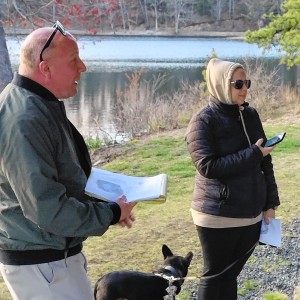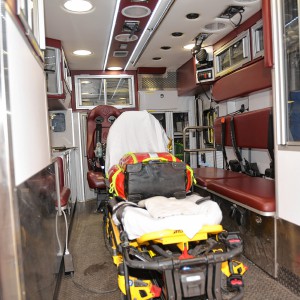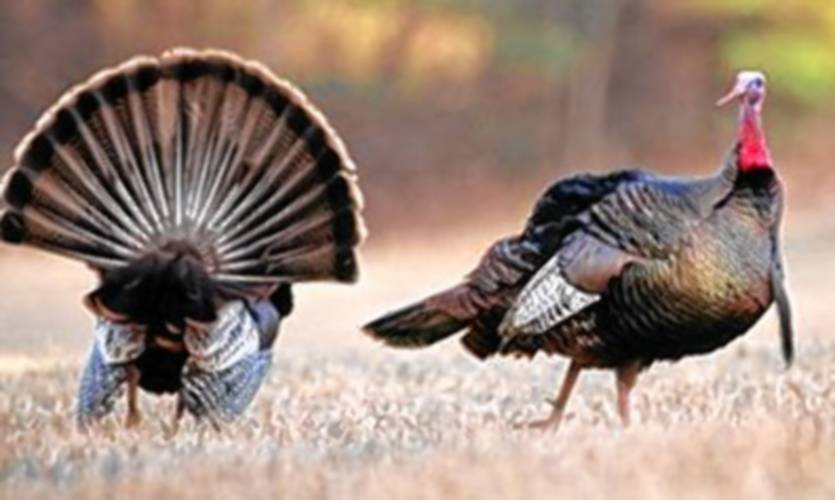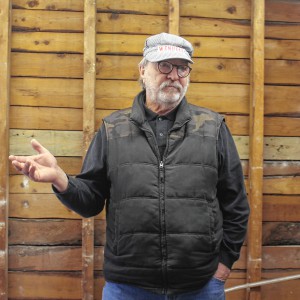Sportsman’s Corner: Turkey time
|
Published: 04-11-2024 5:01 PM
Modified: 04-18-2024 3:12 PM |
By Mike Roche
Each April for many years, this writer has traveled to Kansas to “visit my sister.” The annual trip began when she offered to buy my hunting license if I went to visit and that visit became an annual rite of spring.
Over the years, contact was made with a number of very interesting people in the Leavenworth area and some memorable hunts were enjoyed. Turkey hunting had become one of my favorite outdoor pursuits since my first successful hunt in 1987. Attending the New England Outdoor Writers Spring Safari in Poultney, Vermont, I was paired with veteran turkey hunter Larry Sears, and he called in three jakes. I killed one and that first successful hunt lit the fire. The resounding sound of a gobble still fires me up!
The early morning matching of wits with tom turkeys offered a challenge and opened up a world of experiencing the outdoors in a really special way. Here in Massachusetts, the wild turkey has a very interesting history. The last wild turkey was killed on Mount Tom in Sunderland in 1851. MassWildlife experimented with restoring turkeys beginning in the 1960s, when pen-raised birds were released locally in the Quabbin Reservation. Those turkeys never did flourish, but in the 1970s, turkeys live-trapped in New York were released in the Berkshires and they ultimately thrived. Over time, birds from that robust population were also live-trapped and they then distributed themselves quickly into other parts of western Massachusetts, and by 1980 the population had expanded to what was deemed to be huntable numbers.
Those first seasons were split, with hunters applying for either a permit for the first week or the two-week segment that followed. Over time, the population continued to grow, seasons were expanded and now, wild turkeys are found across the state. The spring season runs four weeks and hunters are given two tags that can be used to take any “bearded turkey.” There is also a fall season where either sex may be taken.
The males sport a beard, which is actually a tuft of coarse hair (specialized feathers) that grows in the center of the chest. A jake – a name used for a male turkey born the previous spring – usually has a beard that is around three or four inches in length. Mature toms (also called gobblers) sport longer beards that are usually six to ten inches. Hens do sometimes grow a beard and toms will sometimes have multiple beards. Last spring, hunters in Massachusetts harvested just under 3,000 turkeys and Massachusetts regulations allow the taking of any bearded turkey. Most states require a beard to be at least three inches in length.
Since that first Vermont jake, a lot of this writer’s money has been spent on specialized turkey guns, the latest in specialized turkey loads (my wife does not want to know what a box of five top-of-the-line turkey hunting shotgun shells costs), camo clothing including masks, boots, calls, more calls, even more calls (including box calls, slate calls and mouth calls), range finders, and a vest to hold all that stuff!
My turkey hunting world expanded to include New York and then Kansas. Over time, licenses in New York, Maine and Vermont have also been purchased. Locally, there has been an exponential growth in participation. Ten years ago, it was easy to find places to hunt without competition. Now there seems to be a pickup truck parked at every spot. If you see turkeys in fields, so does everybody else, making scouting time important as the season approaches. Locating turkeys by calling with owl calls, crow calls or gobbling is exciting in itself and if you are able to pinpoint where a bird is roosted at dusk, your chances the next morning are greatly improved.
Article continues after...
Yesterday's Most Read Articles
 Carol Doucette of Royalston receives $15,000 from Publishers Clearing House
Carol Doucette of Royalston receives $15,000 from Publishers Clearing House
 State documents show Northfield EMS chief’s paramedic license suspended over failure to transport infant
State documents show Northfield EMS chief’s paramedic license suspended over failure to transport infant
 Plan calls for upgrades to Silver Lake in Athol
Plan calls for upgrades to Silver Lake in Athol
 Royalston’s FinCom debates proposed salary increases
Royalston’s FinCom debates proposed salary increases
 What are the protocols for emergency transport of infants?
What are the protocols for emergency transport of infants?
 Magic comes to Red Apple in Phillipston
Magic comes to Red Apple in Phillipston
My first trips to Kansas were really exciting. Sometimes there would be 10 birds or more gobbling in all directions in the open farm country of eastern Kansas. The large tracts of cropland made calling gobblers into range a challenge. When there are that many toms there are also a lot of available hens and it hard to compete with the real thing – but it is always fun trying.
In recent years however, turkey numbers in most of the states in the southeast and midwest have plummeted. Kansas, in reaction to that population decline, eliminated the fall season in 2023 and reduced the number of non-resident permits by 25% by having a lottery for non-resident applicants. The luck of the draw was not with me, and I did not draw a permit. Since neighboring Missouri is only a half hour away, that was looked at as an alternative and sister Pat (AKA Tish) was able to get permission from a couple of her riding friends to hunt on their land in Missouri, so a new adventure will begin next week! There is something about sitting there as darkness slowly becomes day and being jolted by a thunderous gobble! Hopefully, things will work out that way, but the real goal is some time in the woods, listening to the natural wake-up once more. And the barbecue is delicious!
The local trout waters are all stocked with great brook, brown, rainbow and tiger trout. Take a day and enjoy spring while it lasts!
Mike Roche is a retired teacher who has been involved in conservation and wildlife issues his entire life. He has written the Sportsman’s Corner since 1984 and has served as advisor to the MaharFish’N Game Club, counselor and director of the Massachusetts Conservation Camp, former Connecticut Valley District representative on the Massachusetts Fisheries and Wildlife Board, has been a Massachusetts Hunter Education Instructor and is a licensed New York hunting guide. He can be reached at mikeroche3@msn.com.



 Wendell Special Town Meeting to decide on battery storage bylaw
Wendell Special Town Meeting to decide on battery storage bylaw McGovern, Gobi visit development sites in Greenfield, Wendell
McGovern, Gobi visit development sites in Greenfield, Wendell North Quabbin Notes, April 27
North Quabbin Notes, April 27 Cannabis sales in Massachusetts top $1B for third straight year
Cannabis sales in Massachusetts top $1B for third straight year